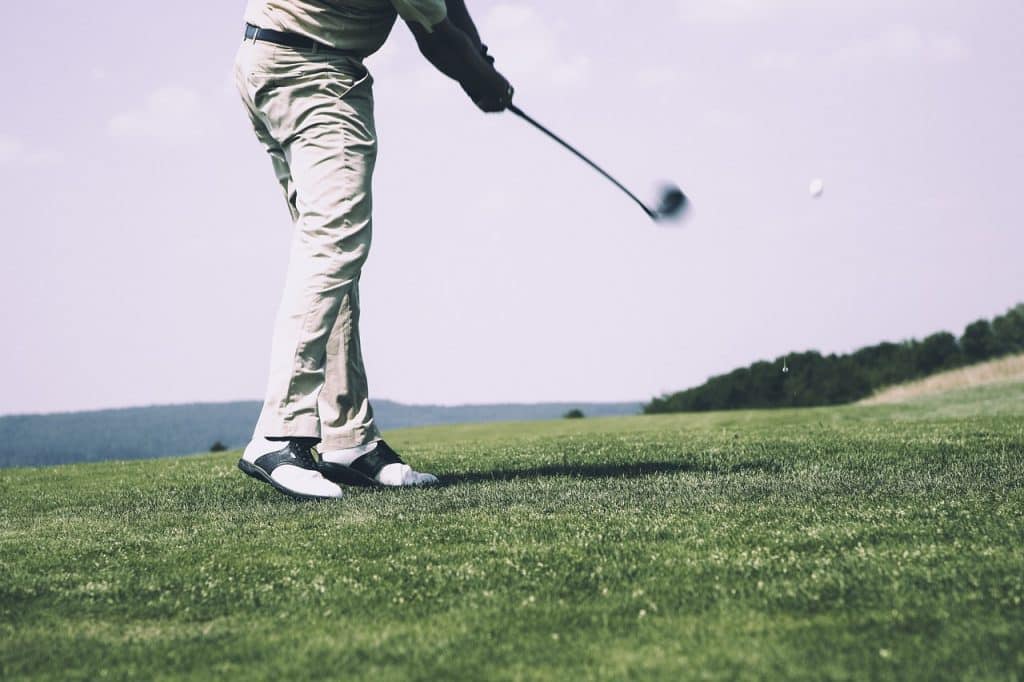Golf is a sport that requires precision, skill, and a lot of practice. One of the most important aspects of the game is the golf swing. A good golf swing can make all the difference in your game, allowing you to hit longer, straighter, and more consistent shots. In this article, we will discuss the basics of golf swing mechanics and provide tips and drills to help you improve your swing.
The Basics of the Golf Swing
Before we dive into the specifics of the golf swing, it's important to understand the basics. The golf swing consists of several components, including grip, stance, alignment, and posture.
The Grip: The grip is the way you hold the club. There are several types of grips, but the most common is the "Vardon" grip, where the index finger of the left-hand overlaps the pinky finger of the right hand.
The Stance: The stance is the position of your feet relative to the ball. The feet should be shoulder-width apart, with the toes pointing slightly outward.
The Alignment: The alignment is the way you position your body relative to the target. The feet, hips, and shoulders should be parallel to the target line.
The Posture: The posture is the position of your body as you address the ball. Your back should be straight, your knees slightly bent, and your weight evenly distributed on both feet.

The Different Phases of the Golf Swing
Now that we've covered the basics, let's look at the different phases of the golf swing. The golf swing consists of four main phases: the takeaway, the backswing, the downswing, and the follow-through.
The Takeaway: The takeaway is the beginning of the swing. It involves moving the club away from the ball and starting the backswing. During the takeaway, the club head should stay low to the ground and the hands should be passive.
The Backswing: The backswing is part of the swing where the club is brought back behind the body. During the backswing, the shoulders should turn, the wrists should cock, and the weight should shift to the back foot.
The Downswing: The downswing is part of the swing where the club is brought down and through the ball. During the downswing, the hips should turn, the wrists should release, and the weight should shift to the front foot.
The Follow-Through: The follow-through is the end of the swing. It involves completing the motion and holding the finish position. During the follow-through, the body should rotate and the club should finish high and over the shoulder.
Common Mistakes to Avoid
There are several common mistakes that golfers make when it comes to their swing mechanics. These mistakes can lead to inconsistent shots and poor performance. Here are some mistakes to avoid:
Swaying: Swaying occurs when the body moves laterally during the swing. This can cause the swing plane to change, leading to inconsistent shots.
Over-Swinging: Over-swinging occurs when the golfer tries to generate too much power by swinging too hard. This can lead to loss of control and poor shots.
Casting: Casting occurs when the golfer releases the club too early, resulting in a loss of power and distance.
Coming Over the Top: Coming over the top occurs when the club is swung outside the intended swing plane, resulting in an over-the-top motion that can lead to slicing or hooking the ball.
Flipping: Flipping occurs when the golfer uses their hands too much in the swing, resulting in an inconsistent strike and poor shots.
Drills to Improve Your Golf Swing Mechanics
Now that we've covered some common mistakes to avoid, let's look at some drills that can help improve your golf swing mechanics.
Alignment and Posture Drills: To improve your alignment and posture, try placing an alignment stick or club on the ground parallel to your target line. Then, stand behind it and position your feet, hips, and shoulders so they are parallel to the stick.
Takeaway Drills: To improve your takeaway, try taking practice swings with a headcover or towel under your left arm. This will help keep your left arm connected to your body and promote a proper takeaway.
Backswing Drills: To improve your backswing, try swinging with a pause at the top of your swing. This will help you check your position and ensure that your weight is properly shifted to your back foot.
Downswing Drills: To improve your downswing, try swinging with a pause at the start of your downswing. This will help you initiate the downswing with your lower body and promote a proper weight shift.
Follow-Through Drills: To improve your follow-through, try holding your finish position for a few seconds after each swing. This will help you ensure that you are fully rotating your body and finishing high and over the shoulder.
Equipment Considerations
Finally, it's important to consider the equipment you use when it comes to golf swing mechanics. Here are some things to keep in mind:
The Importance of Selecting the Right Clubs: Choosing the right clubs can have a significant impact on your swing mechanics. Make sure your clubs are properly fitted to your height, swing speed, and skill level.
The Role of Custom Fitting: Custom fitting can help ensure that your clubs are properly suited to your body and swing mechanics. Consider getting custom fitted for your clubs if you haven't already.
The Impact of Club Weight and Flex on Your Swing Mechanics: The weight and flex of your clubs can affect your swing mechanics. Make sure you choose clubs that are appropriate for your swing speed and strength.
Conclusion
In conclusion, golf swing mechanics are essential to improving your game and becoming a better golfer. By mastering the basics of the golf swing, practicing the different phases of the swing, avoiding common mistakes, and using drills to improve your swing, you can take your game to the next level. Remember to also consider the equipment you use and ensure that it is properly fitted to your body and swing mechanics. With patience, practice, and dedication, you can improve your golf swing mechanics and start hitting better shots on the course.
